What an Average Day Looks Like with 18 of the Weirdest Inventions Ever
Updated: Feb. 14, 2023
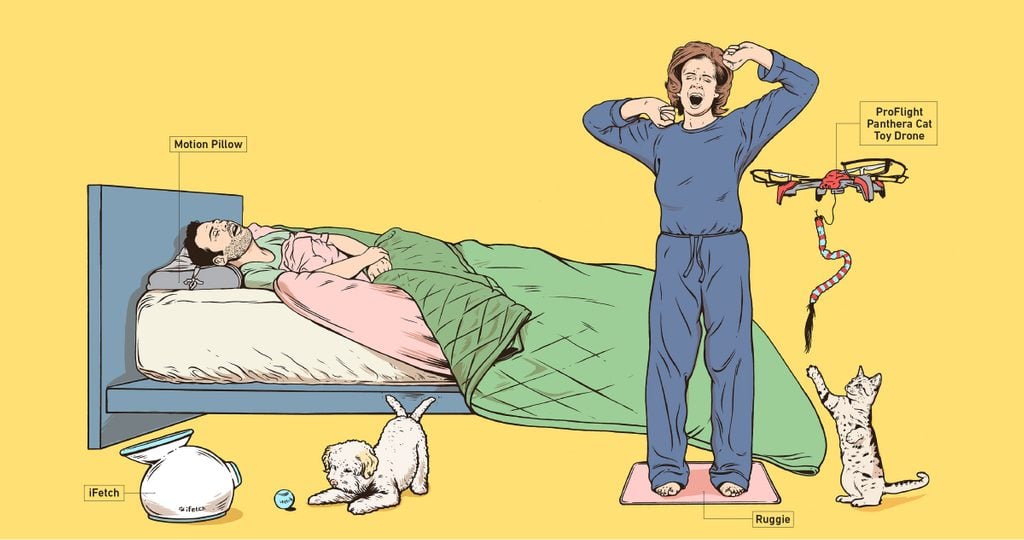
From a bicycle that rides on water to a pillow that stops you from snoring, these 18 innovations will blow your mind—and a hole in your wallet.
For years, Donna had been desperate to get a good night’s sleep. The problem: her husband. He snored. Like a freight train. Donna tried the standard fixes: earplugs for her (uncomfortable and ineffective), mouth guards and nose gizmos for him (ditto), and shoving him (again, ditto). Then she heard about a really out-there solution called the Motion Pillow.
Made by Korean company TenMinds, the pillow has four pressure-sensing airbags that connect to an outside microphone on a nightstand. Once the mic detects her hubby shaking the shingles, it automatically inflates the airbags, which gently reposition his head until he stops sawing logs. Donna doesn’t always go for the expensive gadgets—inexpensive ones are another matter—but when she heard that the Motion Pillow won an Innovations Award 2020 from the Consumer Technology Association, she decided to take the $378 plunge. And it works! In fact, when she’s mad at her husband, she makes snoring sounds just so the pillow will take his head on a roller-coaster ride.
These days, her husband’s snoring no longer wakes Donna up—some strange woman does: “Morning, Champ! Remember, all our dreams can come true if we have the courage to pursue them!” Who is this ridiculously peppy morning person? It’s Donna’s new alarm clock. Bitten by the gadget bug, Donna bought the Ruggie for $69. It’s the only clock that gets her out of bed—quite literally.

First, it rouses her using music, those perky words of affirmation, or an alarm that can hit 120 decibels—a din akin to a pneumatic drill. When Donna reaches for the snooze button, she is confronted by the fact that the Ruggie doesn’t have one. To make it stop, she has to haul herself out of bed and stand on a foam mat—the “rug” in Ruggie—for up to 30 seconds. At that point, she is soundly awake.
Now that you know all about Donna’s sleeping habits, here’s something else you should know about her: She’s not real. But all the devices she encounters in this story are. A few are still in the development stage, but most are available right now. They might not change the world or your life, but they are delightful in their own quirky ways. Even if you wouldn’t benefit from owning, say, a robot designed to help out in the bathroom (more on that below), it’s awfully fun to read about the weird things that marketers and inventors are coming up with.
Which brings us back to Donna. As it happens, she has high cholesterol, and her weakness for bacon doesn’t help. Fortunately, a professor at England’s hallowed University of Oxford is developing the Bacon Patch. It’s a nicotine-style patch you wear on your arm; scratch it, and it releases an aroma redolent of fatty, bacony goodness. “Studies have shown that scent can reduce food cravings,” insists its creator, Charles Spence. Really? That smells fishy to some skeptics. “If I can smell bacon,” one feral bacon eater told the Telegraph when it reported on the faux-porcine product, “I’ll want to eat bacon.”
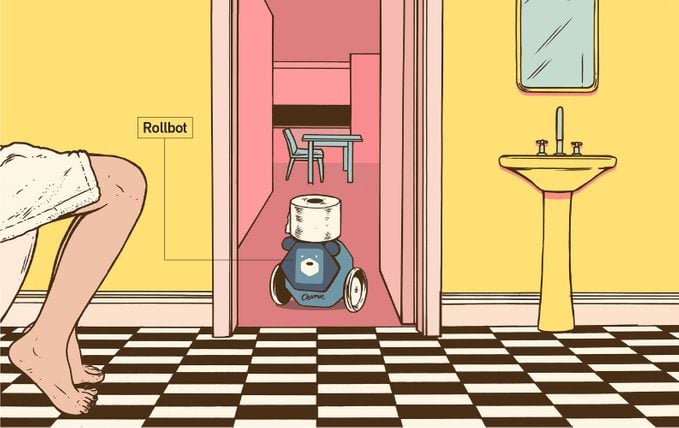 Donna’s actual healthy breakfast is a non-earth-shattering bowl of Honey Toasted Kernza Cereal from Cascadian Farm. Developed by Kansas’s nonprofit Land Institute, Kernza is a new grain that has been touted as a possible savior for our warming planet. Because it’s a perennial—unlike wheat, oats, and barley—it sucks greenhouse gases from the air and traps them in its roots, much like a tree. It also soaks up nitrogen, a fertilizer ingredient that has been blamed for polluting streams and rivers. (Not a cereal person? Patagonia Provisions makes beer with Kernza. Talk about the breakfast of champions.)
Donna’s actual healthy breakfast is a non-earth-shattering bowl of Honey Toasted Kernza Cereal from Cascadian Farm. Developed by Kansas’s nonprofit Land Institute, Kernza is a new grain that has been touted as a possible savior for our warming planet. Because it’s a perennial—unlike wheat, oats, and barley—it sucks greenhouse gases from the air and traps them in its roots, much like a tree. It also soaks up nitrogen, a fertilizer ingredient that has been blamed for polluting streams and rivers. (Not a cereal person? Patagonia Provisions makes beer with Kernza. Talk about the breakfast of champions.)
Alas, Kernza is high in fiber, so off to the bathroom Donna goes. “Poop anxiety is real,” a spokesperson for Charmin, the toilet paper brand, told CNN. And Donna agrees, especially when, after conducting her business, she realizes she’s out of toilet paper. She calls to her husband, but of course he’s still asleep. So she fires up the Charmin app on her phone, and the Rollbot comes to the rescue. Using infrared sensors, the self-balancing robot emblazoned with a teddy bear face arrives bearing a precious roll of preloaded toilet paper. (Alas, Charmin has made only one Rollbot so far.)
 Saved by the robot, Donna continues to get ready for her day. She opens her dresser drawer and pulls out a pair of Sensoria Smart Socks. The socks ($199—OMG!) have a dock for a microelectronic chip that wirelessly relays data about cadence, pace, heart rate, and more to an app on Donna’s phone. You can’t wear low-tech shoes with high-tech socks, so Donna also bought a $400 pair of self-lacing sneakers, the Adapt BB 2.0, which were created by Nike for athletes (NBA star Ja Morant of the Memphis Grizzlies wore them). All Donna need do is insert her foot into the sneaker, and digital sensors inside the sole do the rest by deducing her foot size and automatically closing around it.
Saved by the robot, Donna continues to get ready for her day. She opens her dresser drawer and pulls out a pair of Sensoria Smart Socks. The socks ($199—OMG!) have a dock for a microelectronic chip that wirelessly relays data about cadence, pace, heart rate, and more to an app on Donna’s phone. You can’t wear low-tech shoes with high-tech socks, so Donna also bought a $400 pair of self-lacing sneakers, the Adapt BB 2.0, which were created by Nike for athletes (NBA star Ja Morant of the Memphis Grizzlies wore them). All Donna need do is insert her foot into the sneaker, and digital sensors inside the sole do the rest by deducing her foot size and automatically closing around it.
Donna may be in good shape, but her pudgy pets could use some help. For her dog, she bought the iFetch ($115), a small blue-and-white machine that sits on the floor and automatically launches a tennis ball up to 30 feet. The dog retrieves the ball and drops it into the hole at the top, and the iFetch launches it again.
When cats dream, they envision themselves prowling the Serengeti stalking wildebeests. So Donna bought Kitty the ProFlight Panthera Cat Toy Drone. As its name implies, it’s a drone, but this $100 novelty flies around the room dangling a small toy for the cat to chase. It even has a built-in camera so Donna can watch Kitty from her phone. Donna’s not concerned about the damage a drone might cause indoors because certapet.com assured her that “the safety features, including a collision avoidance system and auto altitude, help protect you from flying the drone into your cat or surroundings.”
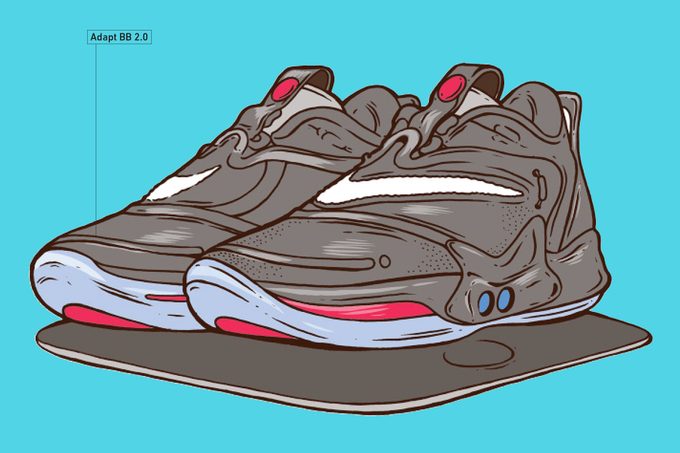
Before leaving the house, Donna stops to write a note for her hubby. She reaches for a pad and her favorite pen ever, the Air-Ink from Graviky. The pen (available only as a prototype) literally writes with polluted air from captured carbon emissions. A cylindrical device called KAALINK fits around a car’s tailpipe and captures up to 99 percent of its black particulate matter, which in turn is converted into inks and paints. “Pollution is bad,” Graviky cofounder Anirudh Sharma told Time magazine. “But pollution happens to be a really good raw material to make inks.”
Donna opens the door to a beautiful day. If she were wearing the Mojo Lens, a smart augmented reality (AR) contact lens from Mojo Vision, she’d know it was 72 degrees outside because the lens would tell her. Donna has been coveting one for a while, though it’s not for sale yet. The lens is activated by eye movement and powered by a minuscule battery that lives on the lens itself. Microelectronics are used to project images on the tiniest of built-in displays. Users can call up information, scroll through text, and even watch videos.
Because “the technology fades away when you want to focus on the world around you,” says Mojo Vision CEO Drew Perkins (the lens hides whatever was being displayed), it makes walking the busy streets safe, unlike when you’re looking at your smartphone. Which, luckily, Donna doesn’t happen to be doing at the moment—or else she would have been clipped by a speeding suitcase gunning for her at six mph.
 That’s right: Created by a Chinese company called ForwardX Robotics, the Ovis Suitcase ($640) is a self-propelled carry-on that uses cameras, facial-recognition technology, and a tracking algorithm to travel hands-free with its owner, avoiding collisions as it wends its way through crowds. “Essentially,” says Nicolas Chee, founder and CEO of ForwardX, “we’ve given the Ovis Suitcase a pair of eyes and a brain.” It’s like luggage and a pet all in one, but you don’t have to pick up after the suitcase.
That’s right: Created by a Chinese company called ForwardX Robotics, the Ovis Suitcase ($640) is a self-propelled carry-on that uses cameras, facial-recognition technology, and a tracking algorithm to travel hands-free with its owner, avoiding collisions as it wends its way through crowds. “Essentially,” says Nicolas Chee, founder and CEO of ForwardX, “we’ve given the Ovis Suitcase a pair of eyes and a brain.” It’s like luggage and a pet all in one, but you don’t have to pick up after the suitcase.
The Ovis does a U-turn and returns to Donna, this time accompanied by its owner, a German tourist. He holds two Ambassador earpieces, audio devices with built-in microphones that translate on the spot. He puts one earpiece over his ear, and Donna does the same with the other. He asks in German how to get to the train station, but Donna hears the question in English. She responds in English, and he nods, understanding everything since her words are relayed in German. The two could have spoken in Japanese, Mandarin, or Hebrew—the Ambassador translates 20 languages and 42 dialects. Donna bids the tourist and his Ovis auf Wiedersehen, then walks to her favorite restaurant and grabs a table.
Minutes later, her friend enters the eatery wearing stylish sunglasses. “Elaine!” Donna calls out. Elaine slowly walks over and takes a seat without assistance, remarkable because she is blind. Since she was fitted with the Orion Visual Cortical Prosthesis System from California-based Second Sight, she has led a more active life.
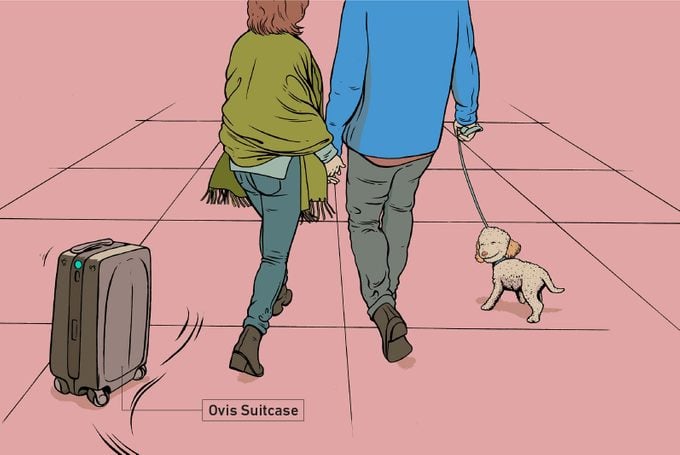
Those stylish sunglasses carry a camera and video-processing unit (VPU). Implanted in the visual cortex of Elaine’s brain is a tiny chip containing 60 electrodes. The wireless VPU converts images from the camera into electrical pulses, which are transmitted to the electrodes on Elaine’s brain, which then figures out what she is looking at. People and objects appear as dots of light. “You don’t even need to have eyes for the device to work,” says Nader Pouratian, MD, PhD, a neurosurgeon at Ronald Reagan UCLA Medical Center who has implanted the device in patients. Elaine was sold when she learned from onezero.medium.com that a participant in a clinical trial was able “to see his birthday candles for the first time in more than seven years.”
The waitress comes by, and Elaine orders an Impossible Burger. Tempted by a bacon cheeseburger at the next table, Donna wishes again that she had that Bacon Patch. Instead, she orders a salad, and the two chat away. Elaine brags about the vacation her son took: He rode a bicycle across a lake.
Well, not exactly. He rode a Manta5 Hydrofoiler XE-1 Bike, which digitaltrends.com calls “the unholy offspring of a boat, an airplane, and an e-bike.” (It also has an unholy price tag: $8,990.) Instead of wheels, the Manta5 is “equipped with a set of hydrofoils, which essentially function like wings in the water. As you pedal and propel the bike forward, water passes over these wings and creates lift, much like airplane wings create lift.” One customer review swears, “It really is like flying on water!”
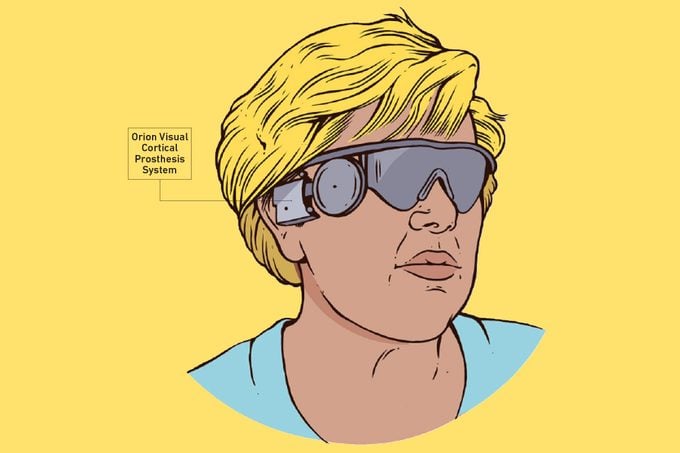 After lunch, Donna leaves Elaine to run an errand. As she’s crossing the street, she gets a text from her husband: “How do I turn off the @$%^ iFetch?!” With her head buried in her phone, she texts back, “I’m coming home!!” Donna’s an irreformable “twalker,” someone who texts while walking, and this time it’s not a suitcase but a car that almost gets her.
After lunch, Donna leaves Elaine to run an errand. As she’s crossing the street, she gets a text from her husband: “How do I turn off the @$%^ iFetch?!” With her head buried in her phone, she texts back, “I’m coming home!!” Donna’s an irreformable “twalker,” someone who texts while walking, and this time it’s not a suitcase but a car that almost gets her.
She knows she has a dangerous habit—pedestrian deaths are climbing—but is happy about the protection on the way. Fred Jiang, assistant professor of electrical engineering at Columbia University, is working out the kinks on his Smart Headphones. When they’re perfected, four miniature microphones will “differentiate car sounds from background noise,” says mashable.com, and work with an app to calculate the distance and position of cars in order to alert wearers when they are in danger of being run over. That sounds wonderful to Donna.
Back home, she switches off the iFetch and joins her frazzled husband on the couch to watch TV. But the screen is nowhere in sight. Donna taps a button on a remote, and a 65‑inch screen unfurls from a rectangular box sitting on a stand, “emerging gloriously like an entertainment cobra from a basket,” says cnet.com. It’s an early version of the not-yet-available LG Signature OLED TV R9. Kept erect by numerous thin horizontal bars and a pair of riser arms on its back, the screen can be raised some 50,000 times before potentially breaking down from wear, according to LG.
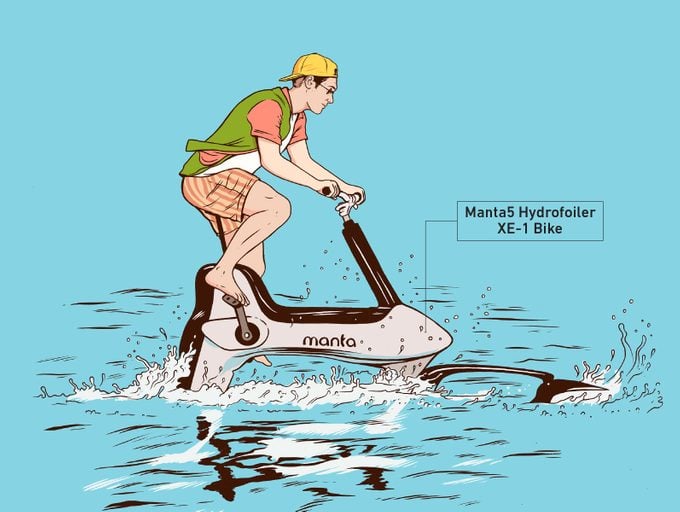
Donna’s husband puts an arm around her. Overcome with love for him, snoring and all, she wants to tell him how she feels. But their smart speakers and virtual assistants, such as Amazon Echo and Google Home, may be listening, so she opens a coffee table drawer, pulls out the Bracelet of Silence, and slips it on her wrist.
The brainchild of Ben Zhao and Heather Zheng, married computer science professors at the University of Chicago, this piece of “digital armor,” as the New York Times calls it, “will jam the Echo or any other microphones in the vicinity from listening in on the wearer’s conversations.” Not yet on sale, the large, clunky plastic cuff is dotted with 24 small speakers that emit imperceptible ultrasonic signals to jam prying microphones.
After whispering sweet nothings into her husband’s ear, Donna calls up Amazon Prime Video and orders a classic, Casablanca. Sometimes the old stuff is still the good stuff.

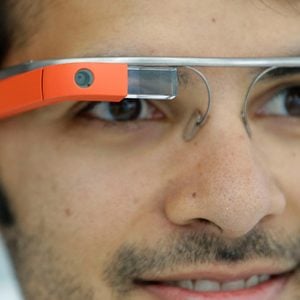
 Inventions That Have Changed the World in the Last Decade" width="295" height="295" />
Inventions That Have Changed the World in the Last Decade" width="295" height="295" />